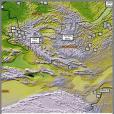《Chronological Framework of the Siberian Paleolithic》是一本圖書,作者是Yaroslav V Kuzmin
基本介紹
- 外文名:Chronological Framework of the Siberian Paleolithic
- 作者:Yaroslav V Kuzmin
- 出版時間:2007年5月
- 頁數:60 頁
- ISBN:9786137001295
- 定價:10.00 美元
內容簡介
In Siberia, the accumulation of radiocarbon dates from archaeological sites since the 1960s makes it possible to compile a general Paleolithic 14C database, which contains about 440 entries as of late 2005. With these data, we can reveal the main chronological patterns of Paleolithic complexes, with a focus on the late Middle Paleolithic (Mousterian) and Upper Paleolithic. The ...(展開全部) In Siberia, the accumulation of radiocarbon dates from archaeological sites since the 1960s makes it possible to compile a general Paleolithic 14C database, which contains about 440 entries as of late 2005. With these data, we can reveal the main chronological patterns of Paleolithic complexes, with a focus on the late Middle Paleolithic (Mousterian) and Upper Paleolithic. The 14C dates for late Middle Paleolithic industries in Siberia are quite “young,” up to about 30,000–28,500 BP and perhaps ~27,000 BP. The emergence of the Upper Paleolithic in Siberia took place relatively early compared with Eastern Europe. At about 43,000–35,000 BP, blade-dominated industries existed in the Altai Mountains and Lake Baikal region, and numerous adornments are known from several sites of that age. The late Upper Paleolithic complexes with microblade technology from the Altai Mountains are 14C dated to about 35,000–28,000 BP, and represent the earliest unequivocal evidence of microblade manufacture in northern Eurasia. The end of the Paleolithic in Siberia is related to the appearance of pottery, which indicates the beginning of the Neolithic period. In northern Transbaikal, the earliest pottery complexes are dated to about 12,000–11,000 BP and in the Russian Far East even to ~13,000 BP, while in most of Siberia they date to approximately 8000–6000 BP. The most important features of the Siberian Paleolithic chronology are: a、the long persistence of Middle Paleolithic complexes, until about 30,000–27,000 BP; b、very early Middle to Upp

